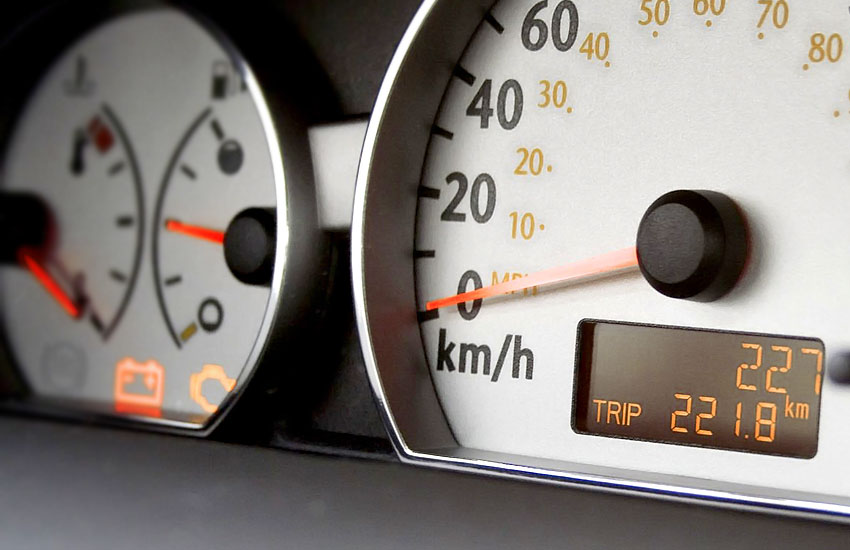You’re curious about how to read the mileage on a car. It’s simpler than you might think! Understanding your car’s mileage helps you track how much you’ve driven.
The mileage, often shown on the dashboard, tells you how many miles your car has traveled. This number is crucial for knowing when to service your car and for calculating fuel efficiency.
In this blog post, I’ll walk you through the basics of reading mileage and what it means for your vehicle. Whether you’re a new driver or just want to understand your car better, knowing how to read mileage is a handy skill. Let’s dive in!

Why is it important to read the Mileage on my Car?
It’s really important to check how many miles your car has gone. This helps you know when to do maintenance, like changing the oil or fixing parts that might be worn out. By keeping track of the mileage, you can make sure your car stays in good shape and runs smoothly.
Another reason it’s important is for knowing the car’s value. People who might want to buy your car will look at how many miles it’s been driven. A car with lower mileage can sometimes be worth more because it might have less wear and tear on it.
Checking your car’s mileage regularly, like every month or when you fill up with gas, helps you stay on top of things. You can plan ahead for maintenance and repairs, which can save you money in the long run by preventing bigger problems. Overall, reading your car’s mileage is a simple way to take care of your vehicle and make sure it keeps working well for you.
How to Read Mileage on a Car: Step-by-Step Guide
Step 1: Locate the Odometer
Locating the odometer in your car is essential for tracking mileage, which is crucial for maintenance and resale purposes.
In most vehicles, the odometer is prominently displayed on the dashboard. It can be either a digital readout or an analog dial, depending on the car’s make and model.
For digital odometers, the mileage is displayed as a series of numbers typically located near the center or top of the dashboard.
It’s usually easy to spot among other dashboard instruments like the speedometer and fuel gauge. Analog odometers, on the other hand, feature a rolling set of numbers that increase as the car travels more miles.
If you’re having trouble finding the odometer, consult your car’s owner manual, which provides detailed instructions on where to locate it.
Once you’ve identified the odometer, you’ll be able to monitor your car’s mileage accurately, enabling you to schedule maintenance at appropriate intervals and potentially increasing its resale value by demonstrating its actual usage.
Step 2: Check the Display
Once you’ve located the odometer on your car’s dashboard, checking the display involves observing the numbers shown.
Modern vehicles typically display mileage digitally, making it straightforward to read. The display shows the total distance your car has traveled in miles or kilometers since it was first driven.
When checking the display, ensure you’re looking at the main odometer reading, which indicates the total lifetime mileage of the vehicle.
Some cars may have additional trip meters that can be reset to measure shorter distances for specific purposes, such as tracking mileage for a single journey or between refueling stops.
Understanding how to interpret the odometer’s display is crucial for various reasons. It allows you to monitor the car’s usage patterns, estimate fuel efficiency, and schedule regular maintenance based on mileage milestones.
Moreover, accurate mileage records are essential when selling or buying a used car, providing transparency about the vehicle’s history and ensuring fair pricing based on its actual usage.
Step 3: Analyze the Numbers
Analyzing the numbers displayed on the odometer involves interpreting the total mileage recorded by your vehicle. The odometer typically displays a series of digits that represent the total distance traveled since the car was first put into service.
For instance, if the odometer displays “50,000”, it means the car has traveled a total of 50,000 miles or kilometers, depending on the unit used.
This number steadily increases as you drive the vehicle, providing a straightforward measure of its usage over time.
Analyzing these numbers periodically is important for several reasons. Firstly, it allows you to keep track of your car’s maintenance schedule.
Many manufacturers recommend specific services based on mileage intervals, such as oil changes, tire rotations, and filter replacements.
By regularly checking and analyzing the odometer reading, you can ensure that your car receives timely maintenance, which can prolong its lifespan and prevent potential issues.
Secondly, analyzing the odometer reading is crucial for estimating the car’s depreciation and resale value. Mileage is a significant factor that potential buyers consider when purchasing a used vehicle.
A lower mileage often indicates less wear and tear, potentially increasing the car’s value. Therefore, maintaining accurate mileage records and understanding how to analyze the numbers displayed on the odometer can benefit you both in terms of vehicle maintenance and resale value.
Step 4: Understanding Units
Understanding the units used by your car’s odometer is essential for accurately interpreting mileage readings. In most countries, odometers measure distance in either miles or kilometers, depending on regional standards and the manufacturer’s specifications.
In the United States and a few other countries, miles are typically used as the primary unit of measurement on odometers. Each digit displayed represents a specific number of miles traveled by the vehicle since it was first put into service or since the last reset.
For example, an odometer reading of “50,000” indicates that the car has traveled a total of 50,000 miles.
In contrast, many other countries, including most of Europe and parts of Asia, use kilometers as the standard unit of measurement on odometers.
In these regions, the digits displayed on the odometer represent the total distance traveled in kilometers. For instance, an odometer reading of “80,000” indicates that the car has traveled a total of 80,000 kilometers.
Understanding the units used by your car’s odometer is important for several reasons. Firstly, it ensures that you accurately interpret and record mileage readings for maintenance and resale purposes.
Different units can affect how mileage milestones are perceived, influencing decisions regarding vehicle service intervals and resale valuations.
Step 5: Regular Check
Regularly checking the odometer reading on your car is important for monitoring its usage and ensuring timely maintenance.
By regularly monitoring the odometer, you can keep track of how far your vehicle has traveled and schedule maintenance accordingly.
Many car manufacturers recommend specific services based on mileage intervals, such as oil changes, tire rotations, and fluid checks.
Checking the odometer regularly also allows you to estimate fuel efficiency and plan for future expenses related to your vehicle’s maintenance and operation.
Additionally, keeping accurate records of your car’s mileage can be beneficial when it comes time to sell or trade in your vehicle.
Potential buyers often consider mileage when assessing the value and condition of a used car, so having documented mileage readings can help demonstrate the vehicle’s history and usage patterns accurately.
I hope this guide helped you understand how to read mileage on a car easily. Checking your mileage is important for knowing how much you’ve driven.
Remember, the odometer shows the total miles your car has traveled. If you’re buying a used car, checking the mileage helps you know how much wear and tear it might have.
Frequently Asked Questions
How often should I check the mileage on my car?
It’s good to check your mileage regularly, like every month or when you fill up with gas. This way, you can keep track of how much you’re driving and if your car needs any maintenance soon.
Can mileage be changed on a car?
Yes, sometimes people try to change the mileage shown on a car to make it seem like it has been driven less. This is illegal because it’s dishonest and can affect how much someone pays for the car. Modern cars have protections, but older cars with simpler displays can be changed.
How can I reset the trip meter on my car?
To reset the trip meter, you usually press a button near the speedometer or odometer. It’s used to track shorter trips or mileage between gas fill-ups without changing the total mileage of your car.
What should I do if my car’s odometer stops working?
If your odometer stops working, you should get it fixed by a mechanic. It’s important because it keeps track of how much your car has been driven, which is needed for maintenance and selling the car.
Does the odometer count miles when towing?
Yes, the odometer counts all the miles your car drives, including those when you’re towing something. This total mileage affects the value and maintenance needs of your car.
How can I know how much my car drives in a year?
You can estimate your car’s yearly mileage by multiplying how many miles you drive on average in a day by 365 (days in a year). This helps for things like insurance and planning car maintenance.
What does “low mileage” mean when buying a used car?
“Low mileage” means the car has been driven fewer miles than others of its age. It’s often seen as better because less driving usually means less wear and tear on the car’s parts.
Can I track mileage without using the odometer?
Yes, you can use apps or devices that use GPS to track how far you drive. These are useful for things like keeping track of work-related driving or managing a fleet of cars.
Are there rules about mileage readings when selling a car?
Yes, when selling a car, you need to tell the buyer how many miles the car has been driven. It’s important to be honest because false information can cause legal problems and affect the sale.


